Urban Mobility and Robotics
Sustainable Urban Mobility
We define Urban Mobility as the condition that allows the displacement of citizens in a city, in order to develop social and economic relations. The mobility solutions include all means of collective transport, such as trains, streetcars, buses and subways, and individual transport, such as cars, motorcycles, taxis, bicycles, among others. A need that grows every day, with the continuous increase of the urban portion of the world's population. However, the increase in the number of vehicles powered by explosion engines, which exhale toxic gases into the atmosphere, despite meeting this growing need for means of urban transportation, contributes greatly to the increase of pollution in all cities, but gains special drama in large cities on the planet.
On the other hand, it is well known that the world has become increasingly aware of the need to use all forms of clean energy, especially renewable and sustainable ones, to meet its development and comfort needs. The possible problems surrounding the use of fossil fuels, particularly in terms of climate change, have been considered since the late 19th century, when in 1896, the Swede Svante Arrhenius became the first scientist to state that fossil fuel use could contribute to global warming. The issue has become an important topic over the last few decades and there is now a general shift toward environmental awareness and energy sources are being looked at more closely. Since then, there has been appreciable progress in the development of alternative energy sources. While the viability of each can be debated, they all contribute to a better outcome when compared to fossil fuels. Among the major alternative clean energy sources, we can mention the following:
- Hydrogen gas - unlike other natural gases, burning hydrogen produces only water vapor and hot air;
- Tidal energy - uses the kinetic energy contained in the vertical variation in the height of the sea water to move electric generators. There is no waste produced;
- Biomass energy - its best generation comes from landfills and its burning, although it releases carbon compounds, produces less than burning fossil fuels;
- Wind energy - in rapid growth, it is becoming increasingly popular, including in small residential installations. It uses the kinetic energy contained in the movement of air masses in the atmosphere to power electric turbo-generators. No waste is produced;
- Geothermal energy - in its most basic form, it consists of extracting energy from the ground around us. It is becoming popular, although the heavy initial costs of setting up geothermal power plants have led to slower-than-expected adoption;
- Natural gas, in use for several decades, has seen further development, with advances in compression techniques making its use more viable and popular, particularly for driving vehicles with combustion engines adapted for natural gas;
- Biofuels - unlike biomass, biofuels make use of animal and plant life to create energy. In essence, they are fuels that can be obtained from some form of organic matter. They are used instead of fossil fuels to power adapted combustion engines;
- Wave power - uses the kinetic energy contained in the coming and going movement of masses of sea water to power turbo-generators. They have an advantage over tidal energy sources because they can be installed anywhere in the ocean. No waste is produced;
- Hydropower - one of the first ways to generate clean energy. It is cheap, renewable, produces no waste, and offers several secondary benefits. The dams built contribute to flood control, crop irrigation, fish production, and tourism and leisure activities, among others;
- Nuclear energy - is among the most abundant forms of alternative energy, with low emissions and high production efficiency. It stimulates the economy, creating jobs in plant construction and operation. Thirteen countries relied on nuclear energy to produce at least a quarter of their electricity in 2015. There are currently 450 plants in operation worldwide; and
- Solar energy - one of the best known clean sources of energy, it transforms light energy into electrical energy. The technology involved has evolved greatly over the years, expanding industrial use and making residential use feasible, both in cities and in the countryside. Several countries have introduced initiatives to stimulate the growth of solar energy use. Completely renewable, the installation costs are outweighed by the savings produced over a few years. No waste produced.
We note that as the problems resulting from the use of traditional fossil fuels become more prominent, alternative fuel sources such as those mentioned above are gaining in importance. It is interesting to note that of the many sources mentioned above, more than half involve the direct transformation of renewable energy into electricity, which demonstrates the importance of using electricity as the ultimate source of clean, renewable energy.
For this reason, it is reasonable to assume that, more than using renewable organic fuels, apply electric energy as a form of traction to urban vehicles, whether they are from scooters, dicycles, bicycles, scooters, scooters, motorcycles, tricycles, automobiles and even buses and trucks, be the trend for the future.
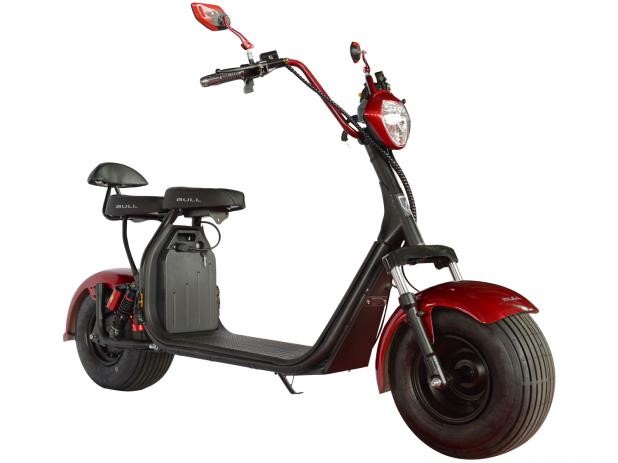
Legislation
LegislationAccording to Contran's Resolution nº 315/2009, a moped is any two- or three-wheeled vehicle equipped with engines of up to 50cc or 4,000 Watts of power and a maximum speed of 50 km/h, with the maximum weight of the vehicle added to the occupant not exceeding 140 kg. These vehicles can circulate on any street in the urban perimeter, always on the right side of the lane or shoulder when on a highway. They are not allowed to be used on express highways. According to the Brazilian Traffic Code, it is up to the municipalities to define whether or not to register mopeds. There is no register of municipalities that require registration. Contran Resolution 465/2013, published on December 13, 2013, equates electric bicycles to ordinary bicycles, provided they do not have an accelerator.
Types of Equipment and Solutions for Sustainable Urban Mobility
Electric scooter - Electric scooters are seen as one of the most popular and practical options for getting around cities. As it employs electric power, which is non-polluting, it becomes, along with other personal electric vehicles, a clean alternative to using cars or motorcycles. The existing models are generally designed for short trips, such as going from home to work. Because they transit in exclusive lanes, usually free of other vehicles, they allow the user to stop wasting many minutes, if not hours, in traffic jams, also bringing an optimization to the quality of life.
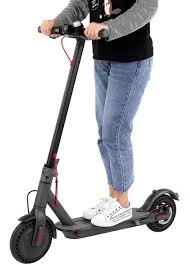
The structure of the scooters is made of light metal and resistant polymers, and most of them have customizable LED lights, at the bottom or on the sides, which allow the vehicle to be seen from a good distance, even in low light. In addition, more modern models have controlled acceleration and braking, a non-slip handlebar, and a digital speed and battery level display. Some models are foldable and can be stored in bags, making them portable and easily carried in cars, buses, or on the subway. The arrival of these models has encouraged many people to use the electric scooter to go to work.
Electric Bicycle - This is a common bicycle equipped with an electric motor, which drives one of the wheels, and a rechargeable lithium battery, of the latest generation, which provides the energy needed to power the motor, in addition to the electronic circuits that manage the operation of the entire electric set. It can work in manual mode, in which the user is solely responsible for pedaling and generating the energy required to move the vehicle, assisted mode, in which the electric motor assists the movement, assuming part of the effort required to move the bicycle, and fully motorized mode, where the electric motor alone provides all the energy required for the movement of the bicycle. The current models, with stronger motors and larger capacity batteries, are able to overcome steep climbs without difficulty. The motors used in the simplest models provide between 150 and 250W of power. The battery, on the other hand, can have more than one capacity available for choice. For 250W motors, batteries with a capacity of 8AH allow bicycles to travel distances of up to 30Km, 10AH batteries, up to 40Km, and 12AH batteries can reach distances of up to 50Km, approximately. It is important to choose the battery according to the maximum daily route desired, so that it can be completed with just one battery charge.
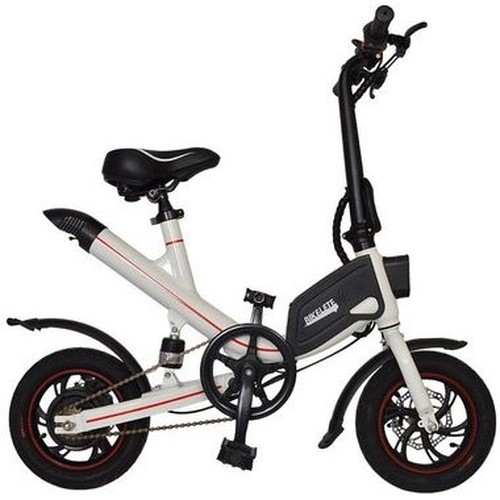
Electric scooters - Like traditional gasoline-powered scooters, electric scooters are larger versions of electric bicycles, usually without pedals, not allowing the rider to contribute the energy needed for movement, which is exclusively supplied by the engine. Equipped with a throttle, they allow precise control of the speed, which can reach up to 80 km/h (50 mph) or more. They usually adopt a design closer to that of conventional scooters. However, there are more sophisticated models, which resemble large motorcycles, and smaller, simpler models, which look more like large scooters.
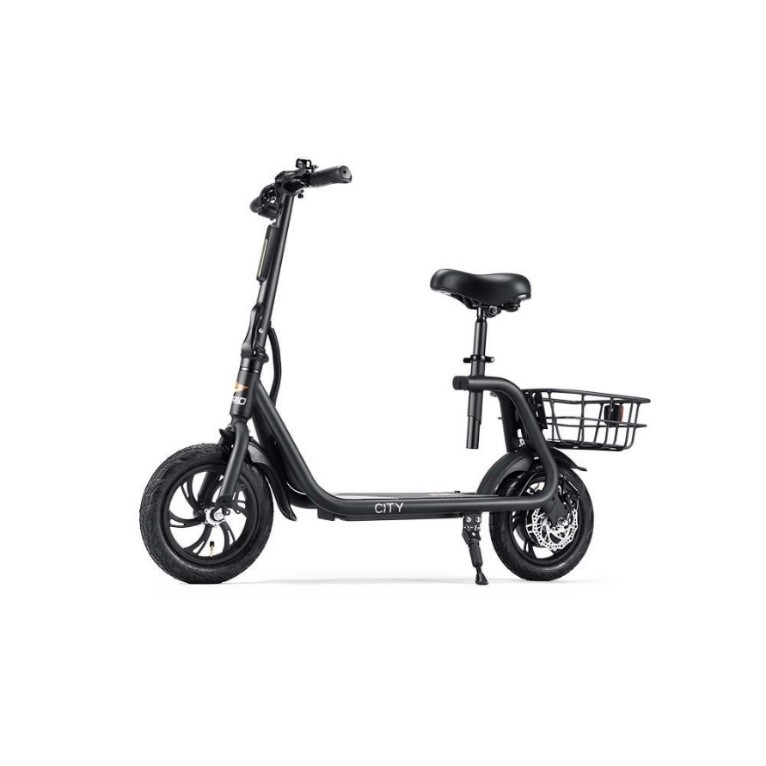
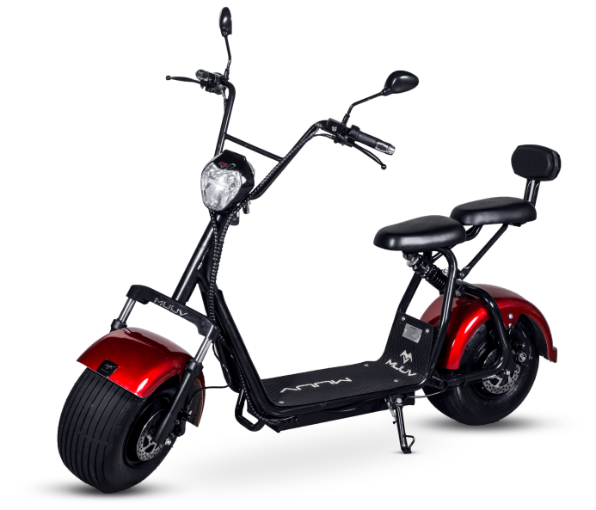
Depending on the model, they use motors ranging from 250 to 800W, with voltages from 12 to 36V, and there may be 48V motors for the larger models. Autonomy varies from 60 minutes to several hours of operation, depending on the power of the motor and the capacity of the batteries. The maximum speed can vary from 50 to 80 km/h. Usually designed for individual use, there are models that have an additional seat for a passenger, seated behind the pilot. Built to be operated in cycle lanes, in principle they do not require a license plate. The larger models, however, due to their high engine power and acceleration capacity, require registration, requiring the model to be certified by the regulatory agency.
Electric Tricycle - The electric tricycle is a vehicle developed with the intention of helping people with advanced age or with locomotion difficulties or restrictions to move independently and with reduced effort for longer distances, inside or outside home. Although this is the preferred target audience for this means of transportation, the use of electric tricycles is not restricted to these groups, and can be used by anyone over the age of 18.
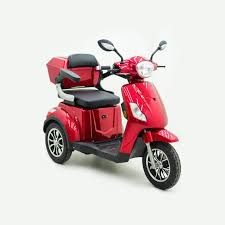
The maximum speed of the existing models varies between 25 and 50 km/h, which greatly reduces the risk of accidents. Normally, these vehicles have a speed-regulating handle (accelerator), as well as a selector button or key that allows you to choose the maximum speed achieved when the accelerator is at the end of its travel. Given the quick response of the electric motors, which show their maximum torque already at 1km and respond firmly to any slight variation of the accelerator, top speed selector switches contribute to reducing accidents, especially during the initial phase of adaptation to the vehicle.
The brakes usually operate similarly to those on conventional scooters and motorcycles, using the right hand grip and, in some models, a pedal. Due to their greater weight, electric tricycles are generally equipped with 24, 36, or 48V electric motors, whose power can vary between 350 and 850 Watts. There are sturdier models, even with room for an additional passenger behind the driver, or cargo trailer. These models require more powerful motors and larger capacity batteries.
Electric Motorcycles - Every day new models of electric motorcycles reach the market. Initially, more like large motorcycles, they had their initial models developed exclusively by manufacturers of electric scooters and tricycles. With the growth of the market and the appeal for cleaner forms of urban mobility, the main and most notorious manufacturers of conventional, gasoline-powered motorcycles eventually entered this segment, and almost all of them have one or more models of electric motorcycles. The continued growth of the electric car market has also stimulated the development of the electric motorcycle segment.
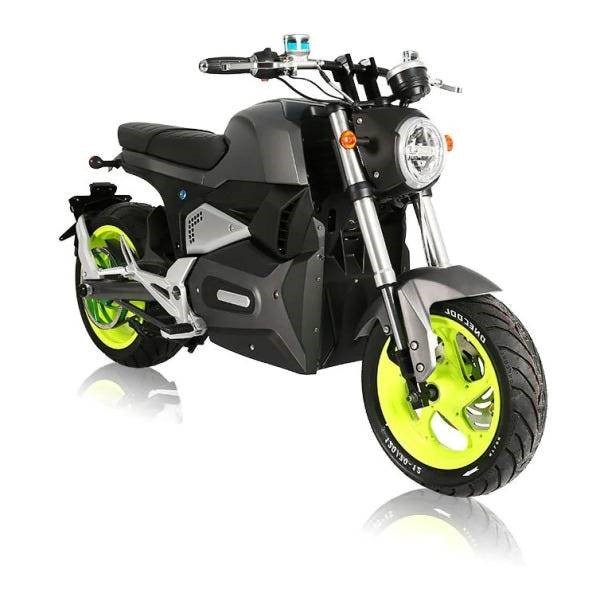
The existing models, inspired by the most elegant motorcycles on the market, feature motors with powers that can reach and even exceed 3,000W, allowing the models to reach speeds of over 200km/h. Due to the rapid response characteristics typical of electric motors, which have their maximum torque already at 1 rpm, electric motorcycles have a spectacular acceleration capacity, far superior to that of conventional motorcycles. However, the range of existing models is still far less than that of conventional motorcycles, barely reaching 250 km after a charge that can last up to 8 hours, approximately. Because they have far fewer components, they are simpler and cheaper to maintain than conventional motorcycles.
Other Sustainable Vehicles - Often called "Little Vehicles", these are devices that have one or two wheels, electric traction, and usually a gyroscopic balance system that keeps them in a vertical balance position by themselves. There are velomobiles, motorized skateboards, unicycles, hoverboards, and other small vehicles, usually built to travel at low speed over short distances. Most of them are endowed with portability and can be stored in bags so as to be easily transported in cars, buses, trains and subways. Low-priced and used as a means of personal or individual transportation, they make an important contribution to cleaner air and a more preserved environment in the cities where they are used.
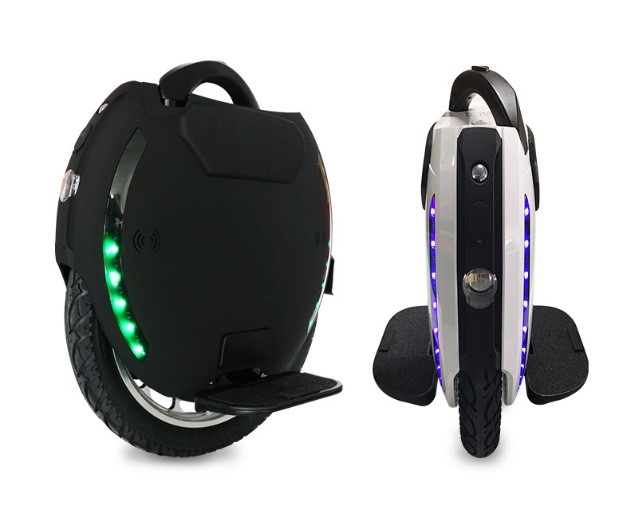

Transportation has recently become the largest producer of greenhouse gas emissions in the U.S.; in cities, it tends to account for an even larger share. Meanwhile, 246 U.S. cities have signed the Paris Climate Agreement, which represents a commitment to reduce greenhouse gas emissions to 17 percent below 2005 levels by 2020, and even more by 2025. Some cities have gone further: Los Angeles recently pledged to produce zero net carbon emissions by 2050. Washington has pledged to reduce greenhouse gas emissions from transportation by 60 percent by 2032. In addition, 34 American cities have joined Vision Zero, a commitment to eliminate all traffic deaths and major injuries that have so far been thwarted by Americans' increasingly lethal propensity for distracted driving. Cities like San Francisco and New York City saw reductions in pedestrian and bicyclist deaths in 2017, but other signatory cities, like Chicago and Los Angeles, had increases-not just year over year, but above five-year averages-following a national increase in traffic deaths in recent years. Some cities have a bold goal that by 2035, 80 percent of trips made in the city will be made in sustainable vehicles, compared to just over 25 percent today.
Anyone who has ever ridden an electric bike, scooter, skateboard, velomobile, knows that there is more to their appeal than pure utility for commuting. It's not just exciting to go straight through, in a free lane that is exclusively yours, while next to you, hundreds of cars are bogged down in crazy, chaotic traffic that destroys people's quality of life. And to do this with the help of a vehicle that looks a lot like a toy you used to use as a child is even more genius. If you then consider the opportunity to feel the wind in your face, bringing you a spectacular sense of freedom, you will understand the success of all these electric vehicles. Small, sustained mobility vehicles can offer an alternative to cars, pure and simple. More than this, they provide personal mobility, on time to your needs. They provide you with freedom; they also provide you with joy.
Home Robots
Domestic robots were developed to act as specialized assistants to perform some of the many activities in the home, bringing convenience to the consumer the moment their presence exempts them from the need to perform tasks such as:
Cleaning - totally autonomous and working mostly through the use of vacuum, the vacuuming and cleaning robots move around using small electric motors for their movement and distance sensors, optical and laser, to read the terrain, avoid obstacles, and make a thorough sweeping of the surface. Among them we can find vacuum cleaners, floor and window cleaners, submersibles, and lawn mowers.
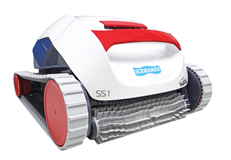
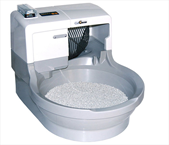
Pet Care - specially developed for pet owners, these equipments fulfill two basic and very necessary functions for a home with animals: hygiene and entertainment. Self-cleaning litter boxes for odorless waste and interactive "puppets" are the main options of home robotics when we refer to the "Pet Care" segment.
Rural Robots
Rural employment robots, due to their variety of applications, form an extensive category that is difficult to group. However, they all seek to serve the same common purpose as other domestic robots: to make life easier for the consumer, whether the consumer is a farmer, a worker, or a inspector. Among the various options, we find:
Inspection - inspection robots can be ground-based or aerial (drones). Able to cover large areas at once, with panoramic views and advanced diagnostics, this equipment provides the rural consumer with the necessary agility to monitor his crops or the movement and welfare of commercial cattle. The way of capturing data can vary a lot, there are options that use high definition video cameras, infrared, laser radars, etc..
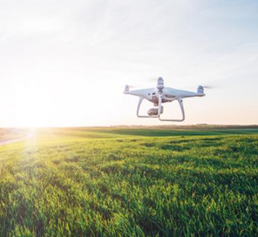
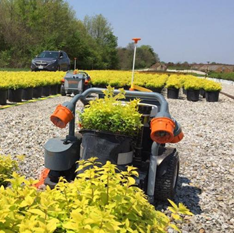
Operational - in this category there is an even greater variety of options available. They are found here from small lawn mowers with autonomous movement and positioning capacity, to heavy agricultural machines with semi-automated management and satellite positioning and navigation capabilities, including plowing tractors, sprayers, fertilizers, irrigators, pruners, harvesters, automated feeders. of animals and carriers of all types and sizes, customizable and widely adaptable to the most varied specific needs of the rural consumer.
